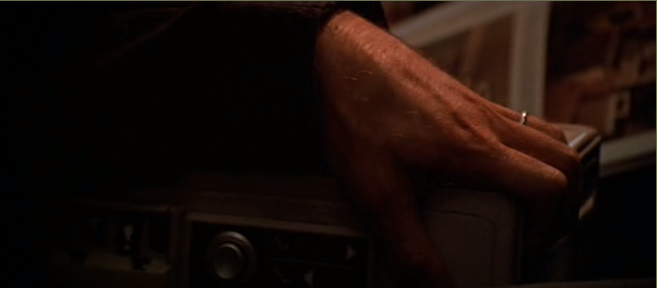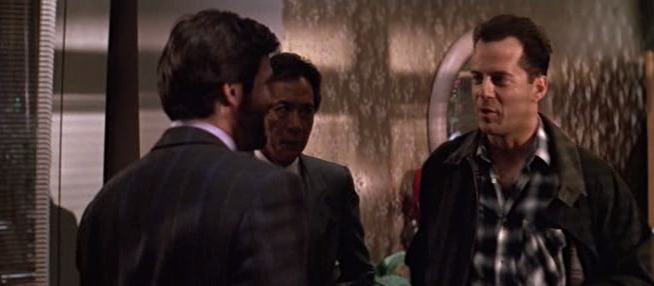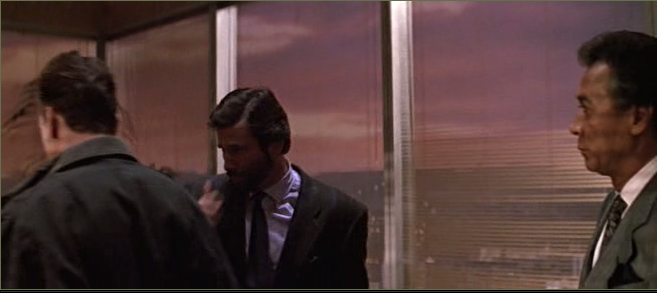Introduction
Apart from the fact that John McTiernan’s 1988 film Die Hard is being packed with action, there is another aspect to this particular movie that explains its popularity with movie-going audiences in Western countries – the fact that the themes and motifs, explored in it, correlate rather well with rationale-driven workings of Westerners’ mentality.
That is, the semantic significance of movie’s plot is being dialectically defined within the context of ‘cause-effect’ perceptional sequence. In its turn, this serves as an undeniable proof to the fact that the style of film’s editing is best described as essentially classical with some elements of a realist editing. In this paper, we will aim to explore such our suggestion at length.
Analytical part
As we are well aware from reading Giannetti’s (2010) book, one of the foremost purposes of classical editing has always been emphasizing emotionally contextual intensity of movie’s scenes: “Classical cutting involves editing for dramatic intensity and emotional emphasis rather than for purely physical reasons” (p. 138).
This is exactly the reason why in classically edited films, directors resort to editing as the tool of accentuating the semantic subtleties of a plot. Even the viewing of few initial single takes in Die Hard substantiates the validity of an earlier suggestion. For example, at the beginning of a scene where the character of officer McClane is being shown arriving to L.A. on the plane, viewers get to be exposed to the sight of McClane clutching to seat’s handles
(00.00.45), which in its turn, was supposed to prompt spectators to regard McClane as being somewhat less manly, due to his fear of flying. Nevertheless, the scene’s last take, in which McClane flashes handgun in the holster, underneath his arm, and talks of having served as police officer for eleven years, is being suggestive of something entirely different – namely the fact that McClane is in fact a ‘real man’.
Thus, the sequence of these two takes in earlier mentioned scene points out to the fact that their qualitative essence is being concerned with increasing the dramatic effect of viewers’ initial exposal to movie’s main character.

Another indication of Die Hard director having chosen in favor of classical editing, revealed in this particular scene, is the fact that the qualitative subtleties of scene’s action are being integrally interwoven with action’s background – in this particular case, the inside of a passenger plane.
In the article, where she discusses the specifics of classical editing, Fried (1987) states: “Even if the speakers are represented as being in the same room, the background behind each one talking can be sufficiently framed so as to differentiate the speakers and their relation to the space they share” (p. 296).
Thus, it was not incidental that at the beginning of Die Hard, McClane is being shown on the plane – by placing the main character in that particular environment and by focusing scene’s takes onto his emotional reactions to what is being said to him by other passengers, director had succeeded in establishing the character of McClane as rather psychologically complex individual – hence, preparing viewers to properly assess the action that is about to ensue.
What also allows us to define the style of Die Hard editing as clearly classical is that fact that McTiernan appears to have had a good understanding of what the concept of ‘cutting to continuity’ stands for. According to Giannetti, it is the matter of crucial importance for directors to ensure that movie’s subsequent scenes are being constructed in such a manner that viewers never cease perceiving the actual plot as something rather continually constructed.
What it means is that there always need to be an innate logic in characters’ spatially defined act, because only then will the viewers be able to think of the plot as realistic, which in its turn, would allow them to relate to it cognitively.
The viewing of Die Hard initial scenes provides us with the insight onto why, despite film’s spatial and semantic complexity (there are few simultaneously developing plots), we get to perceive movie’s action as utterly dialectical – apparently, McTiernan had succeeded in proper utilization of ‘cuts to continuity’.
For example, given the fact that McClane arrives to L.A. in daytime and also the fact that he makes an appearance at Nakatomi Plaza when it is semi-dark, we assume that it had taken him at least few hours to make his way from the airport to the point of his final destination. In the movie, however, the whole thing takes McClane less than ten minutes.
Yet, viewers are being left with the impression that he had indeed travelled for at least a few hours, which in its turn, validates Giannetti’s suggestion as to the fact that classical editing is also being associated with producing a so-called ‘time compression’ effect, when viewers end up perceiving the flow of time just as movie’s characters do: “Most classical filmmakers would photograph the action in several different setups, thus compressing the time and space from the inception of the movement to its conclusion” (p. 102). After having gotten off the plane, McClane is being shown in the airport.
The next scene shows him talking to a limo driver, which implies that he is about to take a ride in that limo. The next scene depicts film’s main character getting weary while replying to driver’s remarks, which is being suggestive of the fact that the trip from the airport to downtown L.A. is indeed rather lengthy. Finally, we get to see McClane walking into Nakatomi Plaza when the sun is just about to set over horizon.
Die Hard features another two crucial elements of classical editing: 1) The semantic continuity of single shots that involve characters’ dialogues/monologues. 2) The so-called ‘matching action’ of cuts.
In the scene when, after having arrived to the corporate party, McClane gets to be introduced to his wife’s colleagues (00.12.40), the dialogues between him and other characters are being represented as linearly unraveled – that is, there is apparent semantic continuity in how Nakatomi employees talk to McClane and in how he addresses their remarks.
Yet, unlike what it is being often the case with realistically edited movies, the conversation between McClane and the partying employees is not being filmed in a single shot but in the series of shots.
What ensures these shots’ smooth transition is the fact that camera constantly changes focusing angles onto conversing characters and also the fact that, while talking to each other, these characters do not act statically. For example, after having shaken hands with the character of Ellis, McClane is shown as intending to walk by him towards the window
(00.12.49). The next take, shows McClane from behind

(00.12.53), as if he had already walked by, which in its turn, endows viewers with a sensation that, despite scene’s apparent statism, it nevertheless is being concerned with action. The same scene features another clearly defined element of classical cutting – the fact that it emphasizes characters’ emotional reaction to spoken words and to the way of each other’s behavior.
For example, after having spotlighted Ellis tactlessly asking McClane’s wife to show everybody her new watch: “Go on, show him, what are you… embarrassed?” (00.13.51), camera’s focus shifts to McClane, whose facial expression betrays him growing weary with Ellis’s tactlessness.
Thus, even though that for duration of the whole conversation in that particular scene, characters do not act in any unconventional manner, within movie’s overall semantic context, this scene appears being utterly memorable, as it provides viewers with the insight onto the properties of featured characters’ psychological makeup – hence, endowing movie with perceptional three-dimensionality.

Nevertheless, even though the style of Die Hard editing is best defined as classical, it features many elements of realistic editing. For example, the earlier mentioned scene features a take when McClane is being shown from behind, while talking to the characters of Ellis,
Takagi and McClane’s wife Holly (00.13.55). In its turn, this correlates with Andre Bazin’s insistence that, in order for cinematographic work to be able to appeal to broader audiences, it must represent reality for what it really is, instead of trying to ‘recreate’ director’s vision of reality in viewers’ minds by the mean of arranging scene’s single shots into semantically unified sequence.
In his article, Henderson (1972) outlines the foremost conceptual premise of Bazin’s philosophy: “Fantasies and adventures should show dangerous or unusual events in a single shot rather than fake them through montage” (p. 22).
Apparently, while working on Die Hard, McTiernan never ceased being aware of what the concept of cinematographic realism stands for, which explains why particularly ‘dangerous and unusual’ (and we might add – emotionally intense) events in this particular film are being indeed represented to viewers as spatially integrated.
In the scene where Hans Gruber addresses his captives, camera provides us with a ‘bird’s-eye’ view on the action (00.25.38). The reason for this is simple – by showing Nakatomi employees being confronted by Gruber in a single shot, director added genuineness to the terror they were experiencing at the time – thus, increasing the extent of plot’s plausibility in viewers’ eyes.
Conclusion
We believe that the arguments we have put forward, while substantiating our view on Die Hard style of editing as classical, with the elements of realist editing, substantiate the validity of paper’s initial thesis. Given the fact that McTiernan’s movie is essentially an action-flick, it was only natural for the director to resort to particularly this style of editing as the most appropriate.
The reason for this is simple – because movie’s plot is being concerned with exploring the theme of a single superhero coming out a winner from deadly confrontation with numerous villains, it was the matter of crucial importance for McTiernan to be able substantiate the soundness of film’s finale by representing McClane as being endowed with a variety of clearly masculine psychological traits.
And, as we have mentioned earlier, it is namely the utilization of classical style of editing that provide directors with an opportunity to reveal the full scope of main characters’ psychological characteristics. Therefore, the fact that Die Hard features a number of editing-related classical/realist cinematographic conventions can be best referred to as being dialectically predetermined by the particulars of this movie’s genre.
References
Fried, D. (1987). Hollywood convention and film adaptation. Theatre Journal 39(3), 294-306.
Giannetti, L. (2010). Understanding movies. Boston, Allyn & Bacon.
Henderson, B. (1972). The structure of Bazin’s thought. Film Quarterly 25(4), 18-27.
Silver, J. (Producer), & McTiernan, J. (Director). (1988). Die Hard [Motion picture]. United States: 20th Century Fox.